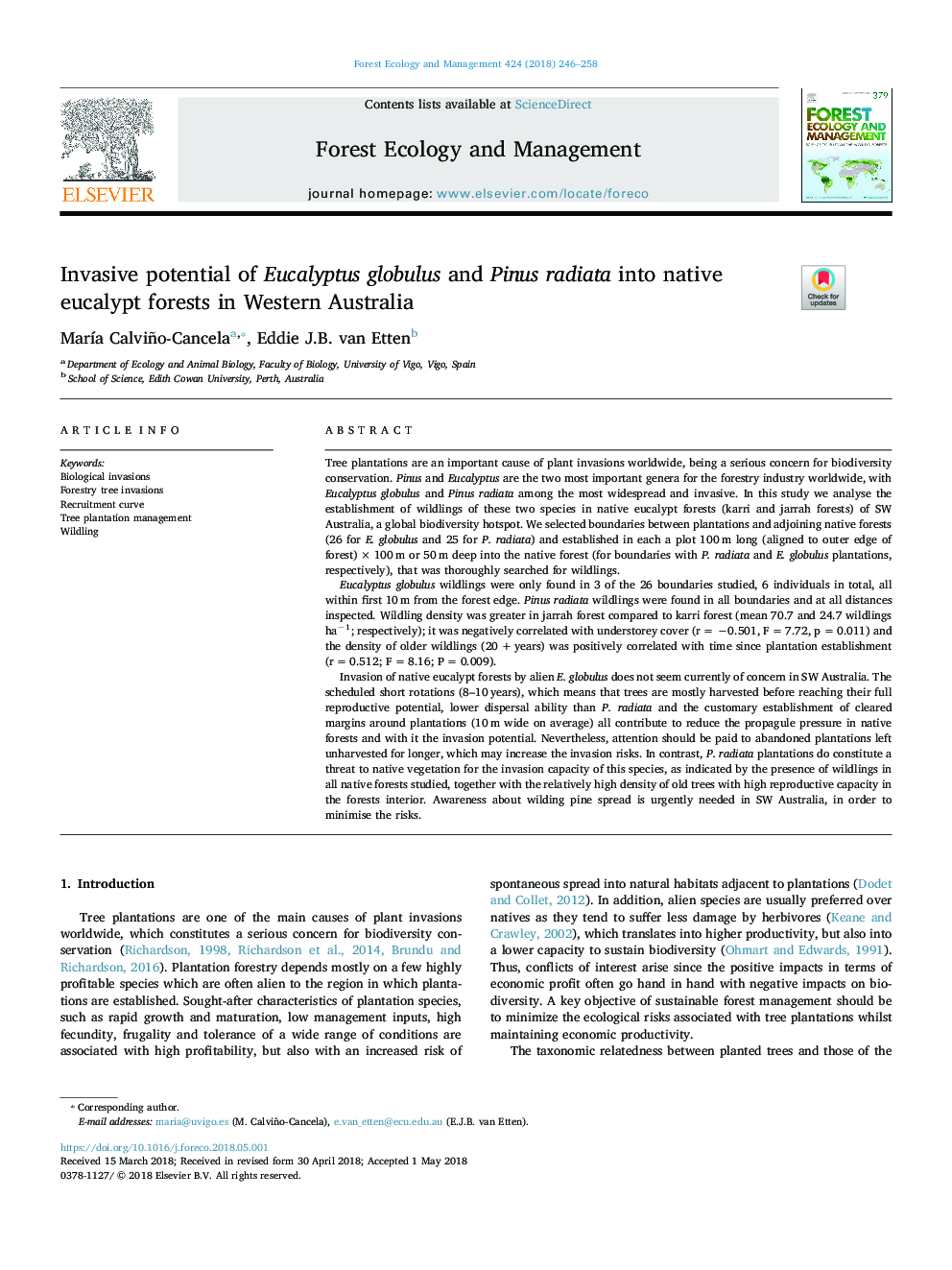| Article ID | Journal | Published Year | Pages | File Type |
|---|---|---|---|---|
| 6541602 | Forest Ecology and Management | 2018 | 13 Pages |
Abstract
Invasion of native eucalypt forests by alien E. globulus does not seem currently of concern in SW Australia. The scheduled short rotations (8-10â¯years), which means that trees are mostly harvested before reaching their full reproductive potential, lower dispersal ability than P. radiata and the customary establishment of cleared margins around plantations (10â¯m wide on average) all contribute to reduce the propagule pressure in native forests and with it the invasion potential. Nevertheless, attention should be paid to abandoned plantations left unharvested for longer, which may increase the invasion risks. In contrast, P. radiata plantations do constitute a threat to native vegetation for the invasion capacity of this species, as indicated by the presence of wildlings in all native forests studied, together with the relatively high density of old trees with high reproductive capacity in the forests interior. Awareness about wilding pine spread is urgently needed in SW Australia, in order to minimise the risks.
Related Topics
Life Sciences
Agricultural and Biological Sciences
Ecology, Evolution, Behavior and Systematics
Authors
MarÃa Calviño-Cancela, Eddie J.B. van Etten,
